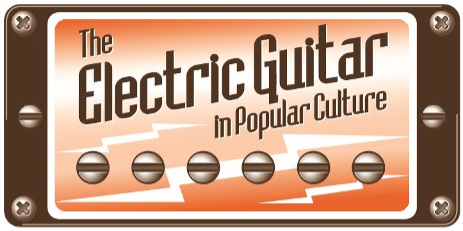
Panel 01 - The Electric Guitar in Popular Culture
The Whole Town’s On Its Feet: The Electric Guitar and Jesus Christ Superstar
Start Date
27-3-2015 11:00 AM
Description
The opening strains of the overture to Jesus Christ Superstar were not provided by a symphony orchestra or by a church choir, but were instead supplied by an electric guitar, working against the expectations of many listeners. The musical landscape to follow featured the electric guitar as both a solo instrumental voice and as accompaniment, playing riffs and ostinati alongside the biblical story of Jesus’ last days, in contrast to sections of music that were performed by more standard orchestral instrumentation. The guitar also functioned as a member of the ensemble, as the timbres of rock instruments and orchestral instruments were combined in various ways over the course of the show. Andrew Lloyd Webber and Tim Rice setting scenes from the Gospels to rock music allowed for an interpretation of Jesus and his followers that engaged effectively with the younger generation, but one that some members of older generations abhorred. The reactions of the audience, then, also created more publicity for the musical, subtitled as a “rock opera.” The guitar not only served to add a new musical flavor, but also functioned as a narrative device, highlighting some of Jesus’s more extreme emotions and depicting certain characters as antagonistic. Reimagining Jesus as a “superstar,” similar to rock idols of the late 60s and early 70s, necessitated using a rock ensemble rather than a traditional orchestra. The emerging presence of the electric guitar in Broadway musicals caused a shift in the types of productions that could be staged, increased the breadth of subject matter that could be addressed, and affected the kinds of audiences that could be expected in the theater. For Superstar, the guitar reflects divisions in characterization, a marker of the time of its staging, and a turning point in the orchestration of stage musicals.
The Whole Town’s On Its Feet: The Electric Guitar and Jesus Christ Superstar
The opening strains of the overture to Jesus Christ Superstar were not provided by a symphony orchestra or by a church choir, but were instead supplied by an electric guitar, working against the expectations of many listeners. The musical landscape to follow featured the electric guitar as both a solo instrumental voice and as accompaniment, playing riffs and ostinati alongside the biblical story of Jesus’ last days, in contrast to sections of music that were performed by more standard orchestral instrumentation. The guitar also functioned as a member of the ensemble, as the timbres of rock instruments and orchestral instruments were combined in various ways over the course of the show. Andrew Lloyd Webber and Tim Rice setting scenes from the Gospels to rock music allowed for an interpretation of Jesus and his followers that engaged effectively with the younger generation, but one that some members of older generations abhorred. The reactions of the audience, then, also created more publicity for the musical, subtitled as a “rock opera.” The guitar not only served to add a new musical flavor, but also functioned as a narrative device, highlighting some of Jesus’s more extreme emotions and depicting certain characters as antagonistic. Reimagining Jesus as a “superstar,” similar to rock idols of the late 60s and early 70s, necessitated using a rock ensemble rather than a traditional orchestra. The emerging presence of the electric guitar in Broadway musicals caused a shift in the types of productions that could be staged, increased the breadth of subject matter that could be addressed, and affected the kinds of audiences that could be expected in the theater. For Superstar, the guitar reflects divisions in characterization, a marker of the time of its staging, and a turning point in the orchestration of stage musicals.

